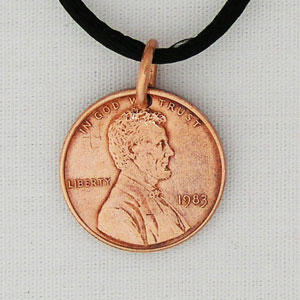 Although much can be done to separate the myth from the actual man, here is no question that Paul Revere was a true American patriot. A successful silversmith by trade, Revere also became increasingly active in a political group called the Sons of Liberty, which is best known today for having staged the Boston Tea Party. What is less known about Paul Revere is that he was also one of the very first Americans to recognize the potential for large-scale manufacturing of metal. If anything, Paul Rever seemed to have a real knack for being in the right place at the right time – and for making the most out of it.
Although much can be done to separate the myth from the actual man, here is no question that Paul Revere was a true American patriot. A successful silversmith by trade, Revere also became increasingly active in a political group called the Sons of Liberty, which is best known today for having staged the Boston Tea Party. What is less known about Paul Revere is that he was also one of the very first Americans to recognize the potential for large-scale manufacturing of metal. If anything, Paul Rever seemed to have a real knack for being in the right place at the right time – and for making the most out of it.
When the British arrived on American shores on the night of April 18, 1775, Paul Revere was in fact one of two men sent out to warn others, on his famous “Midnight Ride”. However, he never yelled out “The British are coming!”, for three reasons: one, the success of his mission that night depended on secrecy; two, the American countryside was swarming with British army patrols; and three, at that time, Americans were all still technically British subjects, so the warning, even if called out, wouldn’t have made any sense at all.
The fact of the matter is, Paul Revere performed his “Midnight Ride” in order to warn others of the British troops (then known as the “Regulars”) crossing the Charles River. More specifically, his mission was to warn his Sons of Liberty pals John Hancock and Samuel Adams of the movements of the British Army, which would likely have resulted in Hancock and Adams’ arrest as well as the seizure of their weapon stores in Concord if not forewarned. Protecting these two patriots proved to be a valuable task, since (among many other valuable contributions) Hancock famously went on to sign his name on the Constitution and Sam Adams heroically went on to lend his name to the best American-made beer to date.
According to actual eye-witness accounts, rather than yell out his famous (and totally false) phrase, Paul Revere most likely whispered, “The Regulars are coming out.” This information was then passed on to other “midnight riders” until about 40 of them were riding about, spreading the news as fast as their horses’ legs could carry them. This was not something that Paul Revere gained a lot of notoriety for at the time. However, about 40 years later, a very famous poet named Longfellow decided to immortalize the Midnight Ride with a poem titled “Paul Revere’s Ride”, which guaranteed Mr. Revere permanent celebrity status in the annals of American patriot history.
After the American Revolution, times were tough in the brand-new United States – in fact, a depression ensued. Realizing that his silver trade wasn’t cutting it anymore, Paul Revere opened a hardware and home goods store, meanwhile also extending his interest in metal work beyond silver and gold. 11 years after the revolution, he opened an iron and brass foundry in Boston and tapped into a very hot market for church bells. A religious revival called the Second Great Awakening was sweeping the country at the time, and if nothing else, Paul was one to recognize an opportunity. Working with two of his many sons, Paul Jr. and Joseph Warren, he created a firm called Paul Revere & Sons, which also did a substantial amount of business by supplying shipyards with iron bolts and fittings for the new naval fleet (“Old Ironsides”) and other ships.
Ultimately, Paul Revere’s firm produced over 900 bells, for which castings he became very well-known for in the industry of his day. In 1801 he opened North America’s first copper mill, and became a pioneer in copper plating production. Although his plans for business were slowed down by a shortage of adequate money in circulation, his copper and brass works eventually grew, through sale and corporate merger, into a large national corporation, Revere Copper and Brass, Inc., which still operates to this day.
Paul Revere died at the age of 83 in 1818, in his home in Boston. He fathered a total 13 living children during his life, and he himself was one of 12 siblings. With that many children, it seems almost surprising that only two ended up going into business with him – but it also may help to explain his drive to continue to flourish even in the middle of this country’s first real depression.
When it comes to Paul Revere, the man is even better than the myth.
-Anja Wulf






